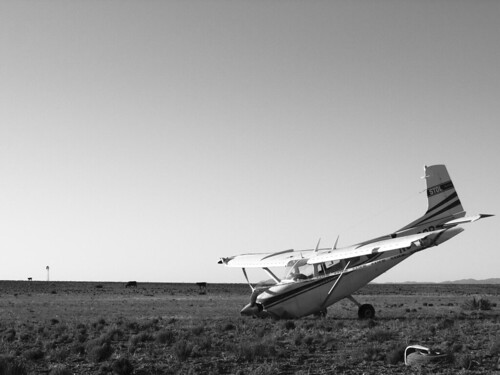
Picture by tomthetombinator
Reading today about the initial report on the Piper Cherokee which crashed near Oban in April 2007, it reminded me of the latest set of fatality figures for General Aviation in the UK (These figures and associated text are taken from the CAA's "Clued Up" magazine).
According to the CAA in 2007 there were 14 fatal accidents involving aeroplanes which claimed the lives of 25 people (If you have your copy of Clued Up, the graphic on top of page 9 and part way down has an incorrect legend, the colours should be swapped). This is by no means the worst year for fatalities (that was 1999 which had 15 crashes claiming 39 lives), but it isn't as good as, say 2003 which had 4 crashes claiming 5 lives.
So does this mean that flying is unsafe?
Absolutely not. Statistically it is still the safest form of transfer. Deaths per passenger mile are still substantially lower than all other forms of transport. But what it does point out is the fact that there are still common reasons that crashes occur. They are generally a result of more than one problem or reason, and they are often a result of bad judgement in bad weather, or incorrect speed causing stalling (it's quite ironic that one of the major causes of road deaths is excess speed and one of the major causes of flight deaths is insufficient speed). Skimming the CAA data the following reported circumstances appear "Descended into sea in low cloud", "Incorrect flap setting on take off. Collided with obstacle", "Crashed turning back following engine failure after take-off", "Crashed in Turkey in reported deteriorating weather'
The preliminary report on the Oban crash appeared to suggest that alcohol may have been a contributing factor with both the pilot and co-pilot being at least twice the legal blood alcohol limit and maybe as much as 5 times over. Of course this is rarely the only cause of an accident (any accident) and the CAA do point out that 'loss of control at low speed continues to feature in the initial reports' of many accidents. In other words keep your speed up when close to the ground and stay current with stall/spin avoidance procedure.
Lets put this in context, though. Since 1990 the number of UK accidents with fatalities in general aviation (aeroplanes with a weight <5700kg) is less than 200. This averages out at 11 per year (or roughly one per month). Compare that with the number of aircraft registered to fly in the UK and the number of aircraft movements recorded and the proportion is very, very minor.
Fly safe.
No comments:
Post a Comment